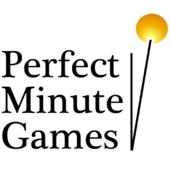Something that has been overlooked in almost every RTS
actually ive read that all the air manuevers(sp?) done in that movie were actual maneuvers performed by f14''s and perfectly capable
In real war these days there are spy satellites. The combatants tend to more or less know when an enemy satellite is going to pass overhead, and can hide or set up decoys/feints during those periods.
It could be pretty cool for a game to incorporate a periodic satellite flyover which shows all the enemy''s units for just a few minutes, but can be easily fooled by decoys, etc. The mini-map display could show a large circle moving across the map at regular intervals to indicate when the enemy was known to be watching. Each side gets the benefit of overhead surveillance, but also get the opportunity to completely fool the opponent about their readiness and deployment, again adding another layer of strategic options.
quote:
Original post by InnocuousFox
That is, if a signal is strength x at 100'', it is sqrt(x) at 200''.
I''d say x/4, not sqrt(x). It''s not exponential, it''s inverse quadratic (the total power is spread over an ever-growing sphere).
- Real radar simulation including atmospheric diffraction. What''s the matter, can''t you afford an extra few floating point calculations in a radar sweep?
- Spy satellites, and using or evading them.
- Optical instruments that open up a huge playing field in detail if you use them to scan the field. Imagine spying and identifying an enemy tank on a ridge silhouetted against the morning light through a magnifying scope. Suddenly the terrain plays a very significant role in how you position yourself.
___________________________________

"To understand the horse you'll find that you're going to be working on yourself. The horse will give you the answers and he will question you to see if you are sure or not."
- Ray Hunt, in Think Harmony With Horses
ALU - SHRDLU - WORDNET - CYC - SWALE - AM - CD - J.M. - K.S. | CAA - BCHA - AQHA - APHA - R.H. - T.D. | 395 - SPS - GORDIE - SCMA - R.M. - G.R. - V.C. - C.F.
quote:
Original post by Plasmadog
Actually, it occurs to me that my first post didn''t imply a linear relationship at all, in fact it doesn''t matter what the formula is. In order for the target to be detected, the signal must travel exactly twice the distance between the antenna and the target, right?
You are correct... we are both correct. You didn''t imply, but the inverse square law is the way to define it. My correction was correct but ill-advised.
Dave Mark
Intrinsic Algorithm Development
Dave Mark - President and Lead Designer of Intrinsic Algorithm LLC
Professional consultant on game AI, mathematical modeling, simulation modeling
Co-founder and 10 year advisor of the GDC AI Summit
Author of the book, Behavioral Mathematics for Game AI
Blogs I write:
IA News - What's happening at IA | IA on AI - AI news and notes | Post-Play'em - Observations on AI of games I play
"Reducing the world to mathematical equations!"
quote:
Original post by Fruny
I''d say x/4, not sqrt(x). It''s not exponential, it''s inverse quadratic (the total power is spread over an ever-growing sphere).
If you said that, you would be wrong. It''s straight up physics, bro.
Dave Mark
Intrinsic Algorithm Development
Dave Mark - President and Lead Designer of Intrinsic Algorithm LLC
Professional consultant on game AI, mathematical modeling, simulation modeling
Co-founder and 10 year advisor of the GDC AI Summit
Author of the book, Behavioral Mathematics for Game AI
Blogs I write:
IA News - What's happening at IA | IA on AI - AI news and notes | Post-Play'em - Observations on AI of games I play
"Reducing the world to mathematical equations!"
quote:
Original post by Fruny
I'd say x/4, not sqrt(x). It's not exponential, it's inverse quadratic (the total power is spread over an ever-growing sphere).
quote:
Original post by InnocuousFox
If you said that, you would be wrong. It's straight up physics, bro.
He'd be right, actually.
Inverse square law:
x = g(z) * 1/a^2
where z is independent of a
Hence for b = 2*a,
f(b) = g(z) * 1/b^2
f(b) = g(z) * 1/ (2*a)^2
f(b) = g(z) * 1/ 4*(a^2)
f(b) = (g(z) * 1/a^2) * 1/4
f(b) = x/4
As to the original point, Terra Nova apparently accounted for this as well as atmospheric diffraction of laser weapons & so on. Having played the game over and over, I still cannot notice the effect. It's not worth the cycles unless it's an integral part of the design (HGII may do it better; I haven't played it), so you'd have to present a design where this effect mattered for me to feel your pain
ld
Edited for clarity
Edited by - liquiddark on January 17, 2002 10:18:14 PM
Zaptruder
quote:
Original post by liquiddark
He'd be right, actually.
Narf!
Sorry...
Dave Mark
Intrinsic Algorithm Development
Edited by - InnocuousFox on January 18, 2002 8:28:50 AM
Dave Mark - President and Lead Designer of Intrinsic Algorithm LLC
Professional consultant on game AI, mathematical modeling, simulation modeling
Co-founder and 10 year advisor of the GDC AI Summit
Author of the book, Behavioral Mathematics for Game AI
Blogs I write:
IA News - What's happening at IA | IA on AI - AI news and notes | Post-Play'em - Observations on AI of games I play
"Reducing the world to mathematical equations!"








